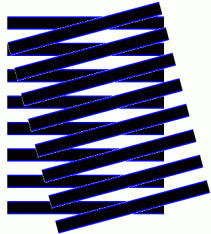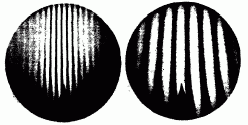
Fringe shift
Encyclopedia

A fringe pattern can be created in a number of ways but the stable fringe pattern found in the Michelson type interferometers is caused by the separation of the original source into two separate beams and then recombining them at differing angles of incidence on a viewing surface.
The interaction of the waves on a viewing surface alternates between constructive interference and destructive interference causing alternating lines of dark and light. In the example of a Michelson Interferometer, a single fringe represents one wavelength of the source light and is measured from the center of one bright line to the center of the next. The physical width of a fringe is governed by the difference in the angles of incidence of the component beams of light, but regardless of a fringe's physical width, it still represents a single wavelength of light.

Luminiferous aether
In the late 19th century, luminiferous aether or ether, meaning light-bearing aether, was the term used to describe a medium for the propagation of light....
. This additional path length was calculated to be .4 wavelengths. This means that as the interferometer's arms were spun to face into and against the ether wind, the vertical fringe lines should have moved across the viewer .4 fringe widths left and right for a total of .8 fringes from maximum to minimum. Michelson reported that only between one-sixth and one-quarter of the expected reading was found.
See also
- Interference
- Interferometer
- Beat (acoustics)Beat (acoustics)In acoustics, a beat is an interference between two sounds of slightly different frequencies, perceived as periodic variations in volume whose rate is the difference between the two frequencies....
- Moiré patternMoiré patternIn physics, a moiré pattern is an interference pattern created, for example, when two grids are overlaid at an angle, or when they have slightly different mesh sizes.- Etymology :...

